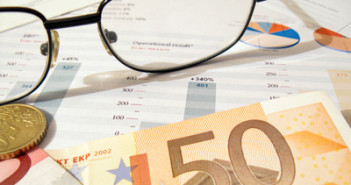EUR/USD has edged higher, and pushed above the 1.34 line in Wednesday’s Asian session. The currency received some help from positive German data, as German PPI were well above their estimates. After a quiet start to the week, US releases will be in full swing, with three key indicators on Wednesday – Building Permits, PPI and the minutes of the most recent meeting of the Federal Open Market Committee.
EUR/USD Technical
- Asian session: Euro/dollar moved higher, touching 1.3434 before consolidating at 1.3425. The pair is unchanged in the European session.
- Current range: 1.34 to 1.3486.
Further levels in both directions:Â Â 
- Below: 1.34, 1.3360, 1.3290, 1.3255, 1.3170, 1.3130, 1.3110, 1.3030, 1.30 and 1.2960.
- Above: 1.3486, 1.3588, 1.3690, 1.3740, 1.3860, 1.3915 and 1.40.
- The pair is receiving weak support at 1.34. 1,3360 is stronger.
- On the upside, 1.3486 is the next line of resistance.
Euro/dollar higher after solid German data – click on the graph to enlarge.
EUR/USD Fundamentals
- 7:00 German PPI. Exp. 0.4%. Actual 0.8%.
- 7:00Â German Final CPI. Estimate -0.5%. Actual -0.5%.
- 7:45 French CPI. Estimate -0.2%. Actual -0.5%.
- Tentative: German 10-year Bond Auction.
- 13:30 US Building Permits. Exp. 0.92M.
- 13:30 US PPI. Exp. 0.3%.
- 13;30 US Core CPI. Exp. 0.2%.
- 13;30 US Housing Starts. Exp.0.93M.
- 15:00 Eurozone Consumer Confidence. Exp. -23 points.
- 19:00 US FOMC Meeting Minutes.
For more events and lines, see the EUR/USD
EUR/USD Sentiment
- German Data Improves: There was more good news out of Germany, as PPI climbed 0.8%, well above the estimate. Earlier this week, German ZEW Economic Sentiment sparkled, hitting its highest levels in almost three years. German Final CPI, a third-tier indicator, was not as sharp, posting a 0.5% decline. As the largest economy in Eurozone, the bloc will need a strong German economy if it has any hope of getting back on its feet. The euro responded postively to the most recent German releases, and has climbed back above the 1.34 line.Â
- Draghi discusses strong euro: Earlier this week, ECB chief Mario Draghi testified before the European Parliament Committee on Economic and Monetary Affairs. Draghi said that the Eurozone is stable, but acknowledged that the economy was weak after three straight quarters of negative growth. He reiterated that he expects the Eurozone to show improvement later in 2013. Draghi also touched on the hot topic of currency exchange rates. He repeated his concern that the high value of the euro could impact on the ECB’s inflation outlook, but sought to reassure his listeners that the euro’s exchange rate was not a policy target.
- GDP releases spook markets: The euro has enjoyed a strong 2013, but the currency hit some turbulence last week, as Eurozone GDP releases for Q4 of 2012 pointed to negative growth. Germany, France and Italy all recorded contraction in their economies, as did the Eurozone economy. ECB head Mario Draghi has declared that the bloc’s economy will rebound later in the year, but is this little more than wishful thinking? The ECB has forecast that the Eurozone economy will shrink by 0.3% in 2013, so Draghi’s optimism could be premature. The euro, which enjoyed a tremendous run in January, has reversed course in February. If the markets continue to see weak Eurozone numbers, the euro could take it on the chin from the US dollar.
- G-20 issues statement on exchange rates: G-20 finance ministers and central bankers concluded a two-day meeting in Moscow on the weekend. Currency exchange rates have become a hot topic, and the G-20 final statement adressed the issue, although it made sure not to ruffle any feathers. The leaders pledged not to “target our exchange rates for competitive purposesâ€, and to move more rapidly to market-determined exchange rate systems. The G-20 statement did not make reference to Japan, which has come under fire for monetary policies which have led to free-fall in the value of the Japanese yen. The G-20 also stated that more effort was needed to continue to strengthen the Eurozone, by building a stronger economic and monetary union.



